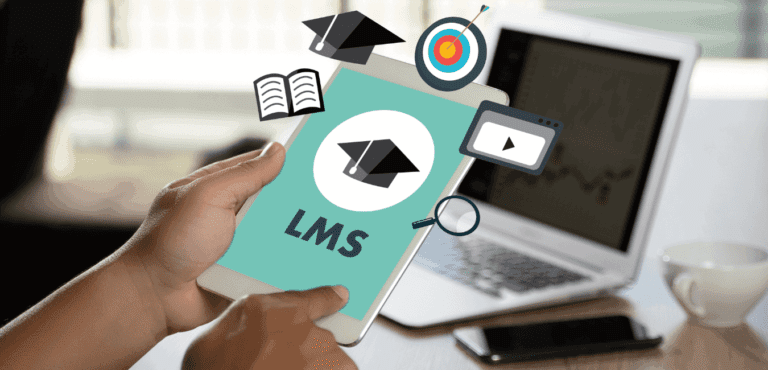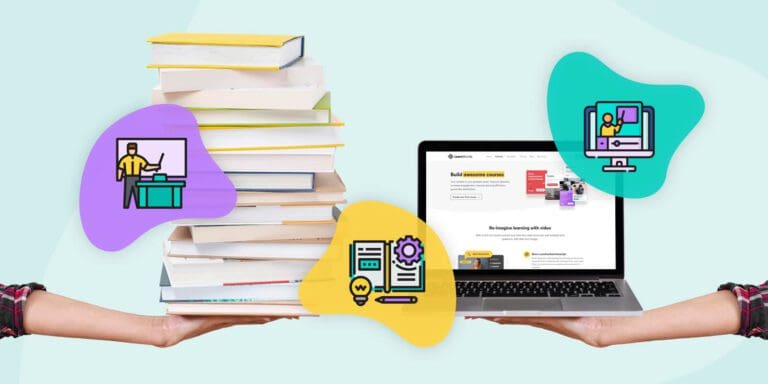Mobile Learning: Advantages and Best Practices
Mobile Learning, or mLearning, delivers educational content to learners through portable electronic devices such as smartphones, tablets, and laptops. It is a flexible and convenient way of learning that allows you to access educational materials whenever and wherever you want. With the rise of mobile devices, mLearning has become increasingly popular over the years, and it is now an essential part of the educational landscape.
Mobile Learning content comes in various forms, including podcasts, videos, apps, quizzes, and full eLearning courses. It is designed to be easily accessible and user-friendly, making it an ideal method of learning for people of all ages and backgrounds. Whether you are a student trying to learn a new subject, a professional looking to upskill, or someone who wants to learn for personal growth, mLearning provides a flexible and convenient way for you to achieve your learning goals.
One of the biggest advantages of mLearning is that it allows you to learn at your own pace. You can access educational materials whenever you have free time, whether it’s during your daily commute while waiting in line or during your lunch break. This flexibility means that you can fit learning into your busy schedule without having to sacrifice other important commitments. Additionally, mLearning is often more affordable than traditional classroom-based learning, making it an ideal option for people who are on a tight budget.
Why Mobile Learning is Important
Mobile learning has gained immense popularity in recent years and for good reason. As an individual, you are constantly on the go, and mobile learning allows you to access educational content anytime and anywhere. In this section, we will explore the benefits and challenges of mobile learning.
Benefits of Mobile Learning
One of the key benefits of mobile learning is its flexibility. With mobile learning, you can access educational content at your own pace and convenience. Whether you are commuting to work, waiting in line, or taking a break, you can easily access educational content on your mobile device. This flexibility makes it easier for you to fit learning into your busy schedule.
Another benefit of mobile learning is its ability to provide personalized learning experiences. Mobile learning platforms can track your progress and provide you with personalized recommendations based on your interests and learning style. This helps you to stay engaged and motivated throughout your learning journey.
Mobile learning is also cost-effective. Traditional classroom-based learning can be expensive, with costs associated with travel, accommodation, and course materials. Mobile learning eliminates these costs, making it a more affordable option for individuals and organizations.
Challenges of Mobile Learning
While mobile learning has many benefits, it also presents some challenges. One of the main challenges is the need for reliable internet connectivity. Without a stable internet connection, you may not be able to access educational content or complete online assessments. This can be a significant barrier, especially for individuals in remote or underdeveloped areas.
Another challenge of mobile learning is the need for self-discipline. With mobile learning, you are in charge of your own learning journey. This requires a high level of self-discipline and motivation to stay on track and complete your learning goals.
Finally, mobile learning may not be suitable for all types of learning. Some subjects, such as hands-on technical skills, may require in-person training and cannot be effectively taught through mobile learning alone.

How to Implement Mobile Learning
Mobile learning (m-learning) can be a powerful tool for providing employees access to training modules and other learning materials anytime, anywhere. Implementing a mobile learning strategy can help your organization create a centralized and consistent training process. Here are some steps that you can take to implement mobile learning in your organization:
Choosing the Right Mobile Learning Platform
The first step in implementing mobile learning is to choose the right platform. You need a platform that is mobile-friendly, easy to use, and can support a variety of learning content. Some popular mobile learning platforms include Moodle, Canvas, and Blackboard. Consider the features and functionality of each platform, as well as the cost and support options.
Creating Effective Mobile Learning Content
To create effective mobile learning content, you need to focus on the key elements of a truly mobile learning experience. This includes the end-user, their needs, and the context of performance. A truly mobile experience has the potential to reach the learner at the exact moment of need and in the most effective way possible.
Here are some tips for creating effective mobile learning content:
- Create bite-sized lessons that can be completed in a short amount of time
- Use multimedia content, such as videos and interactive quizzes, to keep learners engaged
- Make sure that the content is accessible on a variety of devices and platforms
- Provide opportunities for learners to practice and apply what they have learned
Measuring the Effectiveness of Mobile Learning
Measuring the effectiveness of mobile learning is essential to ensure that your training program is meeting its goals. You need to track learner progress, engagement, and satisfaction to identify areas for improvement. Here are some ways to measure the effectiveness of your mobile learning program:
- Use analytics tools to track learner progress and engagement
- Collect feedback from learners through surveys and other feedback mechanisms
- Monitor the impact of mobile learning on business metrics, such as productivity and employee retention
Implementing mobile learning in your organization can be a powerful way to provide employees access to training materials and other learning resources. By choosing the right mobile learning platform, creating effective mobile learning content, and measuring the effectiveness of your program, you can create a successful mobile learning strategy that meets the needs of your organization and your learners.
Examples of Successful Mobile Learning Implementation
Corporate Training
Mobile learning has become increasingly popular in corporate training due to its flexibility and convenience. Many companies have successfully implemented mobile learning to improve employee engagement and performance. For example, Walmart introduced a mobile app for employee training that includes interactive videos, quizzes, and games. This app has helped Walmart reduce training time and costs while improving employee satisfaction and retention.
Another example is McDonald’s, which implemented a mobile learning program for its restaurant staff. The program includes modules on food safety, customer service, and operations. It has helped McDonald’s improve its training consistency and effectiveness while reducing training costs.
K-12 Education
Mobile learning has also been successfully implemented in K-12 education. For example, in Uruguay, the Plan Ceibal program provides every student and teacher with a laptop or tablet and access to a learning platform. This program has helped improve student engagement and achievement while reducing the digital divide.
The San Diego Unified School District implemented a mobile learning program for its English Language Learners (ELLs) in the United States. The program includes mobile apps and online resources that help ELLs improve their English proficiency and academic skills. It has helped the district improve its ELL graduation rates and academic performance.
Higher Education
Mobile learning has also been adopted in higher education to enhance student learning and engagement. For example, the University of Central Florida implemented a mobile learning program that includes a mobile app for course content, assignments, and communication. This program has helped improve student engagement and performance while reducing the need for physical textbooks.
In Canada, the University of British Columbia implemented a mobile learning program that includes a mobile app for student feedback and engagement. This program has helped improve student satisfaction and retention while reducing administrative workload.
Future of Mobile Learning
Mobile learning has come a long way since its inception, and its future looks bright. With the rapid advancements in technology, mobile learning is set to revolutionize how we learn and teach. Here are some of the trends that will shape the future of mobile learning:
- Artificial Intelligence (AI) and Machine Learning (ML): AI and ML will play a significant role in the future of mobile learning. They will help personalize learning by analyzing data and providing customized learning experiences based on the learner’s needs and preferences.
- Virtual and Augmented Reality: Virtual and augmented reality will enable learners to experience real-life scenarios in a simulated environment, making learning more immersive and engaging.
- Microlearning: Microlearning is a trend that is gaining popularity in the mobile learning space. It involves delivering bite-sized chunks of information that are easy to consume and retain. Microlearning is ideal for learners with limited time and prefer learning on the go.
- Collaborative Learning: Collaborative learning will become more prevalent in the future of mobile learning. It involves learners working together to solve problems and share knowledge. Collaborative learning helps learners develop critical thinking and problem-solving skills.
The future of mobile learning is exciting and will transform how we learn and teach. With AI and ML, virtual and augmented reality, microlearning, and collaborative learning, learners will have access to personalized, immersive, and engaging learning experiences.







